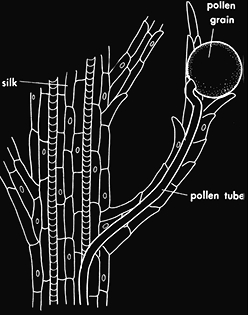2020 Western Bean Cutworm Pheromone Trap Report
2020 Western Bean Cutworm Pheromone Trap Report

Field corn in Indiana typically enters the critical flowering stages of pollen shed and silk emergence sometime between late June to late July. Success or failure during this period of the corn plant’s life greatly influences the potential grain yield at harvest time.

The silks that emerge from the ear shoot are the functional stigmas of the female flowers of a corn plant. Each silk connects to an individual ovule (potential kernel). A given silk must be pollinated in order for the ovule to be fertilized and develop into a kernel. Up to 1000 ovules typically form per ear, even though typically only 400 to 600 actual kernels per ear survive until harvest.

Managing forages for hay production requires much skill. Excellent hay producers understand that yield, quality and persistence are key for a perennial forage production system to be successful.

Early planted corn in Indiana is reaching late vegetative stages and tasseling in the south. Therefore, it is time to start monitoring for diseases to make an informed decision if a fungicide is necessary. This week we have found a low incidence of tar spot, gray leaf spot, northern corn leaf spot, Anthracnose, and common rust in the lower canopy.

Successive days of 90-degree plus high temperatures and very spotty rainfall is limiting pasture growth for livestock grazing in Indiana. It is important to develop a strategy of how to feed your livestock now in case the abnormally dry weather continues.

The forecasts and climate outlooks are still calling for hot and dry (though humid) conditions for the rest of July.
2019 Western Bean Cutworm Pheromone Trap Report
2019 Western Bean Cutworm Pheromone Trap Report

The majority of hemp is in the ground and growers are now actively managing their plants.
© 2025 Purdue University | An equal access/equal opportunity university | Copyright Complaints | Maintained by Pest&Crop newsletter
If you have trouble accessing this page because of a disability, please contact Pest&Crop newsletter at luck@purdue.edu.